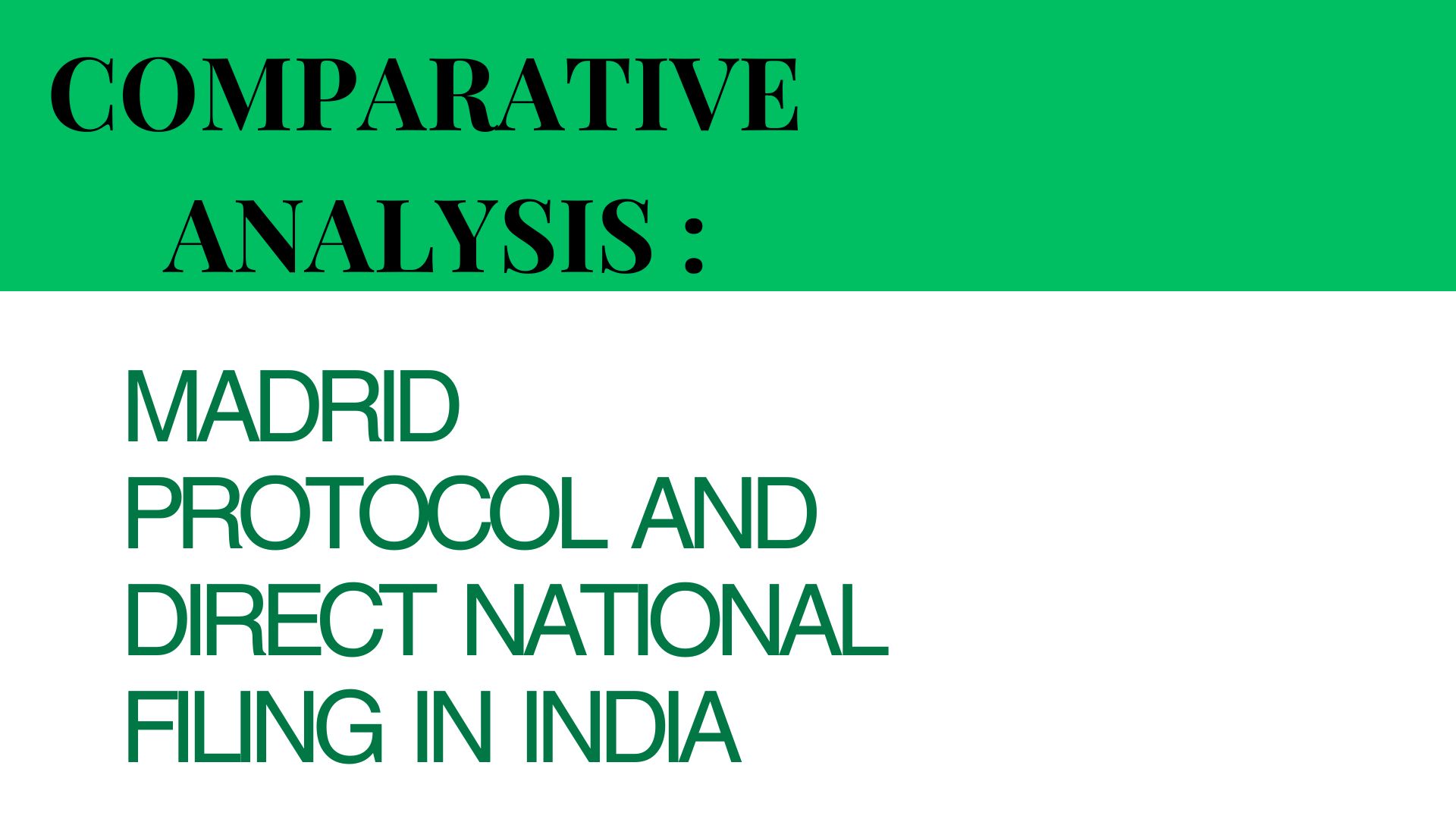
Comparative Analysis: Madrid Protocol vs. Direct National Filing in India
Introduction
Trademarks are the identifiers that enable businesses to establish a strong footing in the global marketplace. Although there are many well-known marks in the industry, registering marks is a vital process for businesses to safeguard their brand identity and intellectual property and to obtain exclusive rights over them. Trademark law underwent substantial changes, both multilaterally and regionally. The Paris Convention established the beginning of the international trademark system, and the Paris Union was expanded by a distinct union which is collectively known as the Madrid system.
The Madrid System is composed of the Madrid Agreement and Madrid Protocol. The former was enacted in 1892 to establish a standardized system for the international filing and registration of trademarks. Since its inception, the Madrid Agreement has undergone several amendments. Nevertheless, there were still certain issues that needed to be addressed and in response to it, in 1996 Madrid Protocol was established which functions as an amendment to the Madrid Agreement for its Members and as an independent international agreement for nations that have not accepted the Madrid Agreement. Hence, to utilize the Madrid protocol, the trademark owner’s country of origin must be a member of the Madrid protocol, and the nation where protection is sought must also be a member. The utilization of the Madrid Agreement necessitates adherence to comparable membership regulations.
Benefits of Madrid Protocol
Comparative Analysis of Registration Process in India and Madrid Protocol
India became a member of the Madrid Protocol in the year 2013, and any individual wishing to register a trademark internationally must follow the protocol’s requirements. The following is a comparison between direct filing in India and filing through the Madrid Protocol, which will provide an insight into which can be more beneficiary.
During the procedural examination, the examiner checks the following:
3. Time Frame for Trademark application process – Under the Madrid Protocol, the approval of registration typically takes between 12 and 18 months after the application is submitted to designated nations. If a designated country fails to notify the applicant about the registration within the stipulated time limit, the registration is automatically granted. In India, it takes up to 10 to 12 months for the approval of registration from the date of filing the final registration.
4. Fee schedule – In Madrid protocol three types of fees are to be paid –
If directly filling in India, then the fee structure is as follows-
a. Basic Fee – It is paid for each class of goods and services as follows
b. If an individual wants to include their mark in the list of well-known marks, then Rs. 1,00,00 is to be paid through e-filing.
5. Language – In the Madrid Protocol, the applicant has the option to submit an application either in English, French, or Spanish. However, if applying directly in India, the application can be submitted in either English or Hindi.
6. Dependency Period of 5 years – In the Madrid system, when an application is filed, it remains dependent on the initial application at the original office for a period of five years. This means that if there is any objection or cancellation of the mark at the origin office, all other designations connected to that trademark will lose their protection. This situation is referred to as a ‘Central Attack,’ where actions at the origin office impact the entire Madrid application and its designations. For instance, if an Indian applicant, A, submits an application under the Madrid Agreement or Protocol for international trademark registration based on their initial filing in India, and specifies four designated countries for trademark registration, any objection to the mark in India within five years can lead to the cancellation of protection in all designated countries. However, the Madrid Protocol offers a way to mitigate the effects of a ‘Central Attack.’ It allows the applicant to convert the international registration into a national application within three months while retaining the original filing date of the international application. In contrast, if an application is filed directly in India, the applicant does not face the five-year dependency period.
Conclusion
The Madrid Protocol offers significant advantages for trademark registration, including streamlined processes, cost efficiencies, and broader geographical protection through a single application. Its ability to facilitate filing in multiple languages and the convenience of a unified fee structure are notable benefits compared to direct national filing in India, which involves more complex and time-consuming procedures. However, the Madrid Protocol’s dependency period of 5 years poses a potential risk that is not present in direct filings in India, but the same can be mitigated within three months of cancellation of the mark in the home country. For businesses seeking expansive international trademark protection with streamlined management, the Madrid Protocol is highly advantageous. Conversely, for those focusing solely on the Indian market, direct filing may be more suitable due to its simplicity and lack of dependency on international filings.
Written by Nikita Verma, Intern @Intepat